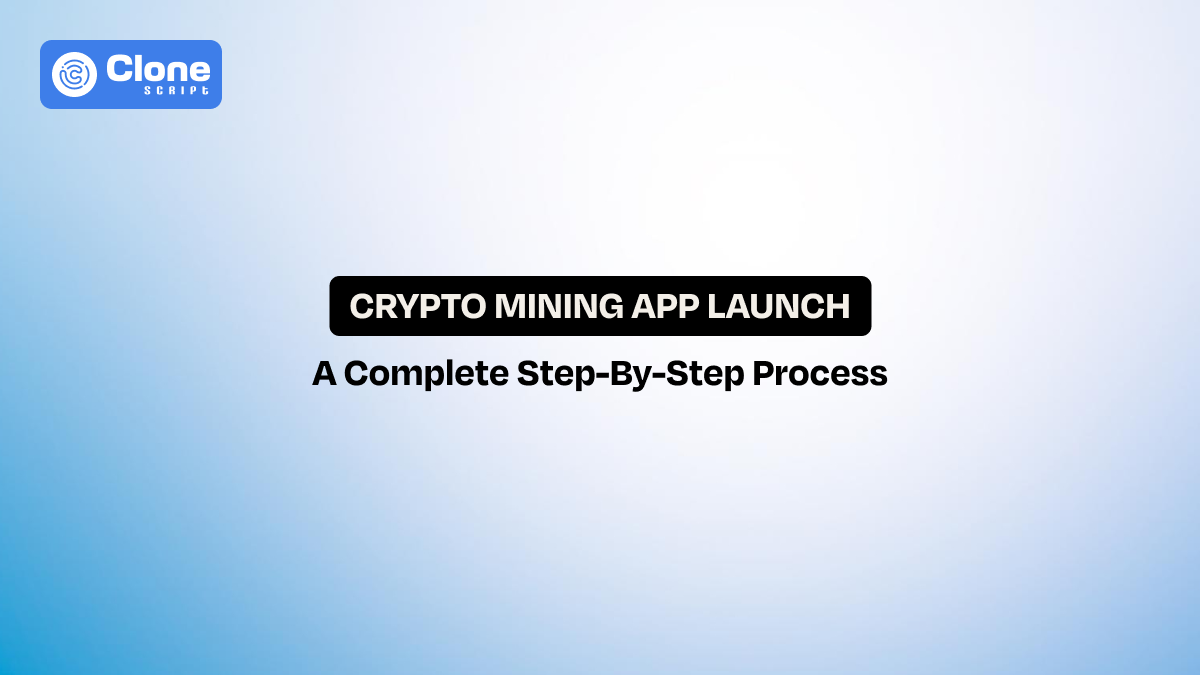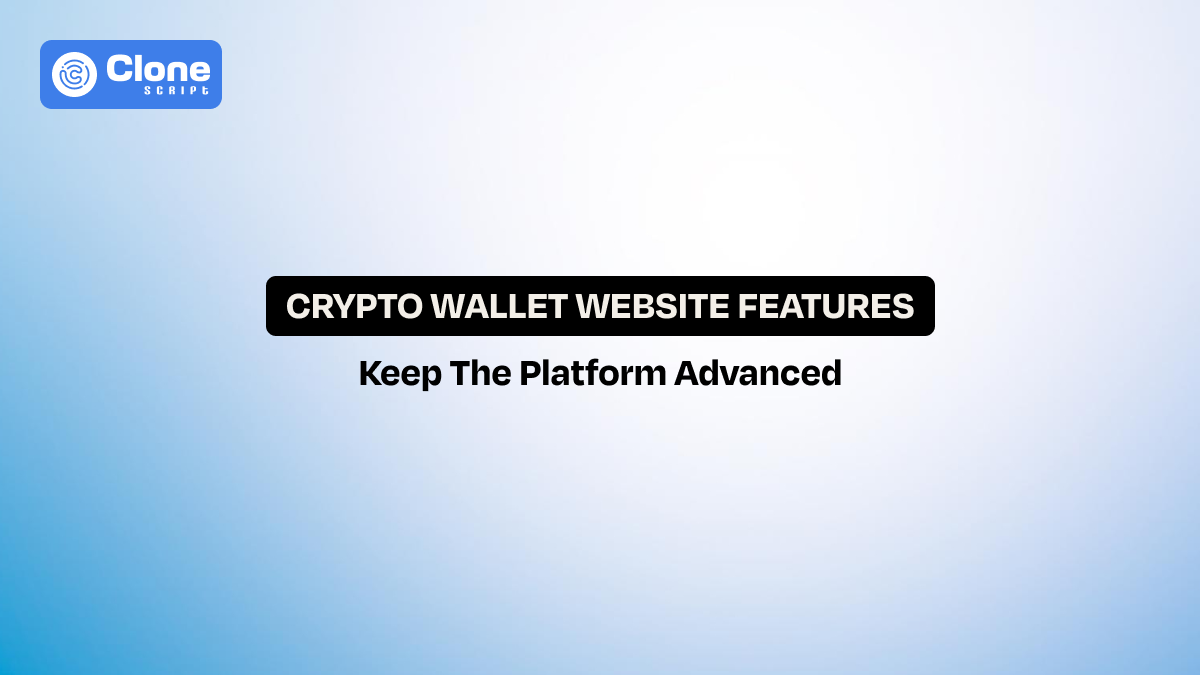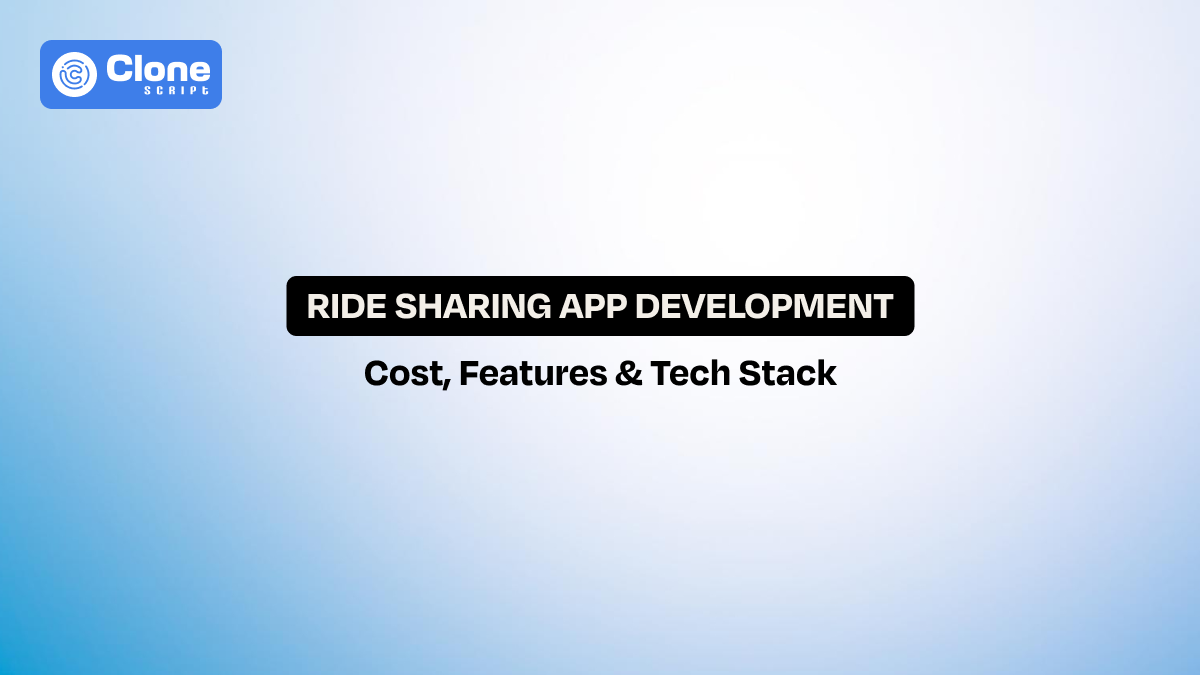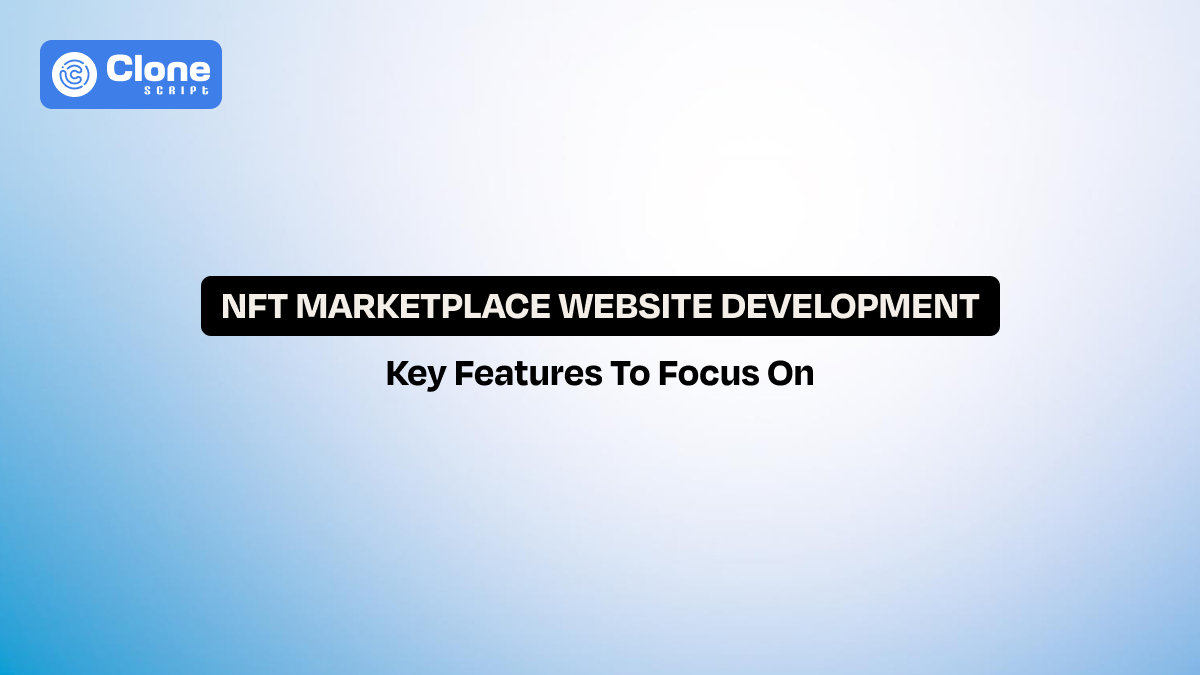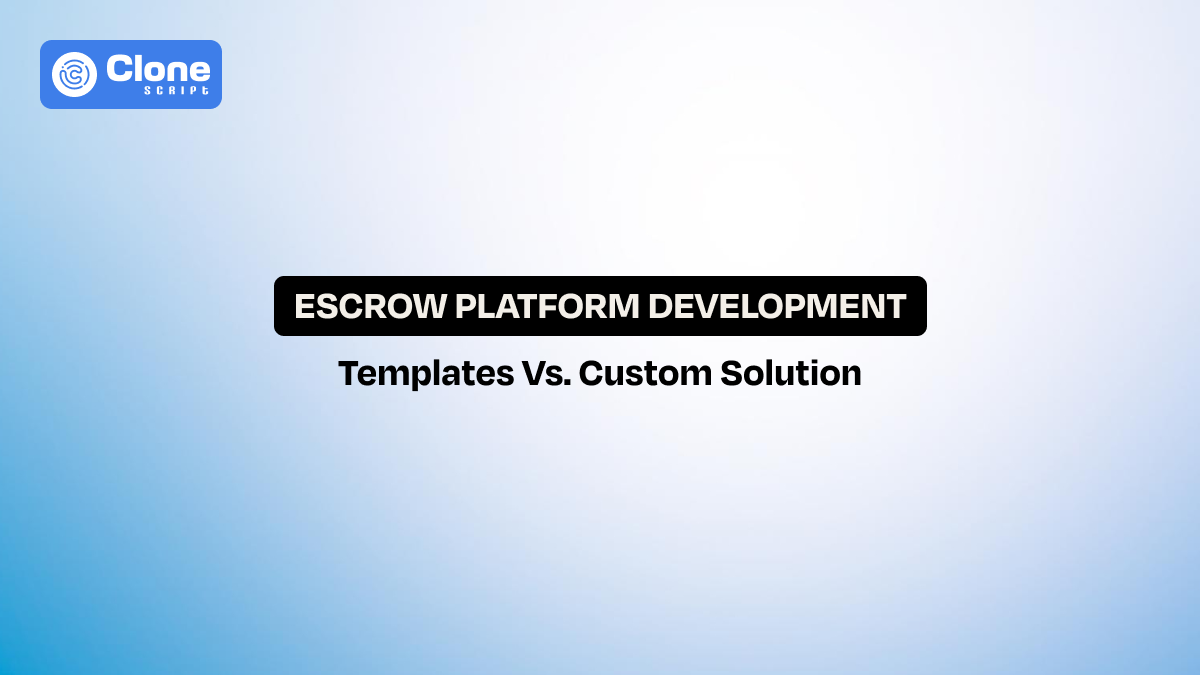Step-by-Step Process to Launch Your Own Modern Crypto Mining App
Today, a successful industry worth over $15 billion globally is cryptocurrency mining. With thousands of people and businesses mining Bitcoin (BTC), Ethereum, and other digital currencies every day. But let’s be honest — most mining tools out there are either clunky, overly complicated, or don’t offer the flexibility modern users expect.
If you’re looking to build something that stands out, creating a crypto mining app is a golden opportunity. It usually gives users a clean, intuitive app that makes mining accessible, transparent, and efficient — while also handling the heavy lifting behind the scenes.
In this guide, we’ll break down the step-by-step process to launch your own crypto mining app in 2025. Whether you want to develop a bitcoin mining app, a cryptocurrency app supporting multiple coins, or even a cloud mining solution, you’ll get clear, actionable advice. We’ll cover everything from picking the right features and tech stack to ensuring top-notch security, plus tips on launching and marketing your product effectively.
Let’s get started.
Understanding Crypto Mining Apps
Cryptocurrency mining used to be the domain of tech enthusiasts running powerful rigs in their basements.
At its core, a crypto mining app connects users to a blockchain network, allowing them to participate in the process of validating transactions and earning cryptocurrency rewards. But unlike simple wallet apps or exchange platforms, mining apps are much more technically complex. They must handle intense computational tasks, provide real-time performance monitoring, and manage absolute security for user data and mined coins.
There are generally two main types of mining operations supported by these apps:
-
Proof of Work (PoW) Mining:
This is the most common method, especially for BTC mining. The app directs the user’s hardware to solve complex mathematical problems, verifying blockchain transactions in return for rewards. This requires significant computing power and energy consumption, making efficiency a top priority in development.
-
Proof of Stake (PoS) Mining:
PoS is an energy-efficient alternative that validates transactions based on the amount of cryptocurrency a user holds and is willing to "stake." While not as common in mining apps yet, PoS is gaining popularity for its lower resource requirements and sustainability benefits.
Most modern mining apps today don’t require users to build complicated setups from scratch. Instead, they offer user-friendly interfaces where miners can easily connect their rigs, monitor performance, manage mining pools, and track earnings.
Why is this important for developers?
The mining ecosystem is competitive. According to recent data, over 60% of global mining operations now run via cloud-based solutions, meaning users expect seamless remote management, low-latency interfaces, and top-level security. Developing a crypto mining app that combines intuitive design with powerful backend capabilities isn’t just nice to have — it’s essential for standing out.
Additionally, the market is evolving fast. By 2025, new regulations, energy efficiency standards, and growing interest in eco-friendly mining solutions will demand apps that are both innovative and compliant.
Understanding these fundamentals sets the foundation for building a mining app that isn’t just functional but successful.
Let’s understand the process to make and launch the crypto mining app.
Step 1. Define Your Crypto Mining App Model
Before jumping into development, the first critical step is to define your crypto mining app model clearly. Your choice here will shape the entire architecture, features, and even your target audience. Let’s explore the most common models used today:
1. Cloud Mining App
In a cloud mining app, users don’t need powerful hardware on their side. Instead, they lease remote computing power from data centers that handle the heavy lifting. Users can manage mining contracts, monitor performance, and receive payouts — all from their smartphone or web app.
-
Pros: Easy for beginners, no need for expensive hardware.
-
Why It’s Popular: Studies show that over 60% of cryptocurrency mining in 2024 happens through cloud-based solutions due to accessibility and scalability.
2. P2P Mining App (Mining Pool App)
This model connects miners, allowing them to pool resources and share rewards proportionally. It’s a community-driven solution ideal for small to mid-size miners who want to compete with larger players.
-
Pros: Lower costs per user, better chances of earning rewards.
-
Key Insight: Pool mining reduces the variance of payouts, making it more predictable for users.
3. Solo Mining App
This is for advanced users who want full control over their mining hardware and strategy. The app connects directly to the blockchain network and handles mining without pooling resources.
-
Pros: Full control over mining strategy and earnings.
-
Challenges: Requires powerful hardware and technical knowledge.
Which Model Should You Choose?
For startups and new developers wondering how startups can launch a crypto mining app, a correct app model is often the safest bet. It reduces hardware costs, is easier to scale, and lowers technical barriers for end-users.
If your goal is to target professional miners or develop an advanced tool, a P2P mining pool app or a solo mining app might be a better fit.
Example Scenario:
Let’s say your goal is to target crypto enthusiasts with little technical knowledge. A cloud-based crypto mining app with a simple dashboard, easy wallet integration, and predefined mining plans will appeal most. On the other hand, if targeting advanced users, your app should allow customizable configurations, deep analytics, and advanced notifications.
In short, defining the right model is the blueprint that informs your features, tech stack, and monetization strategy.
Step 2. Plan the Features of Your App
Once you’ve defined your mining app model, the next crucial step is to plan the features that will make your app stand out. A successful crypto mining app features include balanced performance, ease of use, and security, while offering meaningful insights and control to the user.
Here are the core features every modern crypto mining app should include:
1. Real-Time Performance Dashboard
Miners need to see their hash rate, power consumption, active coins being mined, and estimated earnings in real time. A clean, easy-to-read dashboard helps users monitor their mining progress without technical confusion.
-
Example: Display graphs showing hash rate trends and payout history.
2. Wallet Integration
Integrate popular cryptocurrency wallets (like MetaMask, Trust Wallet, or a built-in wallet) to allow seamless storage and transfer of mined coins. Automatic payouts should also be supported to simplify the process for users.
3. Multi-Currency Support
Supporting multiple cryptocurrencies (Bitcoin, Ethereum, Litecoin, etc.) expands your app’s market appeal. The app should allow users to switch between different mining algorithms based on their hardware and strategy.
4. Cloud Mining Management
If you’re building a cloud mining app, the ability to buy mining contracts, manage rented resources, and schedule tasks remotely is essential. Users should also receive automated reports on uptime, earnings, and system health.
5. Referral Program
Incorporating a referral or affiliate program helps boost organic growth. Allow users to invite others and earn a commission or bonuses in return, driving network effects.
6. In-App Notifications
Send push notifications or in-app alerts when important events occur, such as:
-
Mining pool downtime
-
Hash rate drops
-
Payouts processed
-
Security warnings
7. Security Features
Implement strong security measures for the following things, including:
-
Two-factor authentication (2FA)
-
End-to-end encryption
-
Cold wallet storage for funds
-
Activity logs for transparency
8. Mining Algorithm Optimization
Allow advanced users to tweak mining parameters such as intensity, power limits, and algorithm selection to maximize efficiency and control over their hardware.
Pro Tip:
Keep the UI intuitive and avoid overwhelming users with too many technical options. Design the interface for easy onboarding, but provide advanced settings for power users.
By carefully selecting and implementing the right features, your app won’t just serve as a tool — it will become an integral part of the user’s crypto mining setup.
Step 3. Choose the Right Tech Stack for Crypto Mining App Development
Selecting the best tech stack for crypto mining app development is one of the most critical decisions you’ll make. It impacts your app’s performance, scalability, security, and maintainability. Here’s a recommended tech stack based on industry trends and developer best practices in 2025:
-
Frontend Development
For frontend app development, you have two choices:
-
Flutter:
Flutter offers a fast, cross-platform solution that works on both Android and iOS, delivering a smooth UI and performance. Many developers prefer Flutter for crypto apps because it accelerates development while maintaining a native-like feel.
-
React Native:
Another solid option is React Native, especially if your team is already familiar with JavaScript. React Native is excellent for building responsive interfaces with reusable components.
-
Backend Development
To make your app secure and properly managed, backend development is required. Here you can find the appropriate options regarding it:
-
Node.js:
This backend technology is ideal for handling real-time data and asynchronous tasks, such as mining status updates and API calls to the blockchain.
-
Python (Django or Flask):
Python provides powerful integrations for blockchain APIs, rapid development, and solid performance for handling complex mining operations.
-
GoLang:
This technology is known for its efficiency in concurrent operations. Go is especially useful if your mining app needs to handle large volumes of transactions or data processing with minimal latency.
-
Blockchain Integration
For blockchain work management, you have to rely on the advanced solutions:
-
Bitcoin Core API:
For Bitcoin mining apps, this allows direct interaction with the Bitcoin network for transaction processing and block management.
-
Web3.js:
Web3.js is necessary if you’re supporting Ethereum or other EVM-based coins. It simplifies interaction with smart contracts and blockchain data.
-
Database
Securing the data of Web3 transactions is important in app development. Here is the best recommendation for database options:
-
PostgreSQL:
PostgreSQL offers a stable and secure relational database solution, perfect for managing structured data like user profiles, mining statistics, and wallet transactions. Its reliability ensures accurate record-keeping for sensitive mining operations.
-
MongoDB:
MongoDB’s flexible schema makes it ideal for storing dynamic data such as mining configurations, system logs, and real-time performance metrics. It allows your app to adapt as mining strategies evolve.
-
Security Layer
Without a security layer integration, the crypto mining app may be vulnerable to use. Here are the most common preferences you may choose:
-
JWT (JSON Web Tokens)
JWT enables secure, stateless authentication by issuing encrypted tokens, simplifying session management while protecting user identity during API interactions.
-
SSL/TLS Encryption
SSL/TLS ensures all data exchanged between the app and backend servers is encrypted. This protects sensitive mining operations and user credentials from interception.
-
AES Encryption
AES encryption is used to securely store sensitive data like private keys and wallet credentials. So, even if the database is compromised, the sensitive information remains protected.
-
Amazon Web Services (AWS), Google Cloud Platform (GCP), or Microsoft Azure
Cloud platforms provide highly scalable infrastructure, allowing your mining app to handle spikes in demand, offer remote mining control, and store large amounts of performance data efficiently.
-
AWS is ideal if you need the most reliable, mature infrastructure and the widest range of instance types. Best for large-scale crypto mining apps needing global availability.
-
Google Cloud Platform (GCP) is a strong choice if cost-efficiency and developer-friendly tools matter most, especially for compute-heavy mining tasks.
-
Microsoft Azure works best for startups or enterprises already invested in the Microsoft ecosystem, with strong hybrid-cloud capabilities and integration with existing tools.
The selection of cloud platforms for a crypto mining app depends on what kind of facilities and requirements you want in development.
Step 4. Crypto Mining App Development Process
Building a crypto mining app isn’t just about writing code. It’s a carefully planned process that requires a strategic approach to ensure the app is efficient, secure, and scalable. Below is a practical crypto mining app development guide that breaks down the key steps developers should follow.
-
Requirement Analysis
Start by defining your app’s core purpose and target audience. Ask yourself:
-
Are you building for casual miners or professionals?
-
Will the app support cloud mining, solo mining, or mining pools?
-
What cryptocurrencies will the app support (Bitcoin, Ethereum, etc.)?
Getting clear answers here will help you avoid feature confusion and focus your development on what matters most.
-
Wireframing & UI/UX Design
A clean, intuitive crypto mining app design interface is critical for user adoption. Design app wireframes and a prototype that showcase:
-
Performance dashboards (hash rate, earnings, uptime).
-
Wallet integration screens.
-
Mining configuration panels.
To save time in app interface design, you can go with the premium Figma UI kits that are optimized for a better UX and keep the platform professional. Use this UI kit in the crypto mining app development and start the frontend, and then the server-side system management.
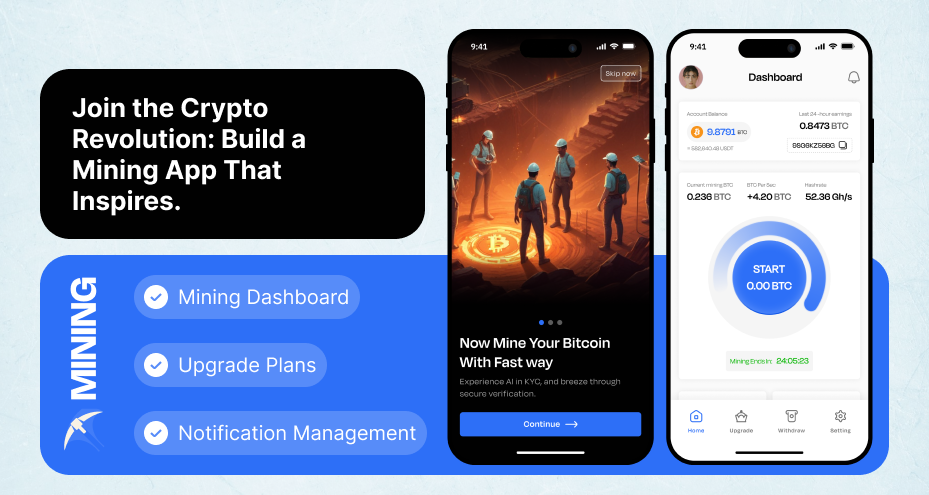
Note that the focus is on simplicity. Mining can already be complicated, so your app should make it easy, not harder.
-
Core Development
This is where the real coding begins. Key tasks include:
-
Integrating mining software APIs or developing your own mining engine.
-
Setting up wallet management for smooth coin transfers.
-
Building a robust backend to process real-time mining data.
-
Developing the front-end UI with Flutter or React Native for cross-platform support.
Remember: Efficient resource management is key. Mining apps are resource-heavy, so code for optimal performance and minimal latency.
-
API Integration
Connect your app to the necessary third-party services:
-
Blockchain network APIs (Bitcoin Core API, Web3.js).
-
Cloud provider APIs (AWS, GCP, or Azure) for infrastructure management.
-
Payment gateways for processing withdrawals or mining plan purchases.
This step makes the app function on advanced technology and is free from any vulnerability.
-
Admin Panel Development
An admin panel helps you monitor mining pools, manage user accounts, control cloud resources, and track performance metrics in real time. Include features such as:
-
User activity logs.
-
Mining pool health status.
-
System alerts for errors or downtime.
This feature can make the platform appropriate and easy to manage while handling the issues in real-time.
-
Quality Assurance (QA)
Thorough QA & Testing is important to avoid pitfalls later. Run the following test cases:
-
Functional testing: Ensure all features (wallet transfers, dashboard updates) work correctly.
-
Performance testing: Simulate heavy loads to verify system stability under high demand.
-
Security testing: Scan for vulnerabilities, especially in authentication and API calls.
By a properly tested application for crypto mining, you can be doubly sure the platform is ready to go without facing any errors and bugs.
Cost to Develop Crypto Mining App
Depending on complexity, the cost to develop a crypto mining app typically ranges from $20,000 to $150,000.
-
Cloud mining apps are generally cheaper due to lower hardware dependencies.
-
Advanced mining pool or solo mining apps with customizable algorithms and detailed analytics will cost more.
Pro Tip:
Consider using a Flutter template for a crypto mining app to speed up development while maintaining flexibility to customize features.
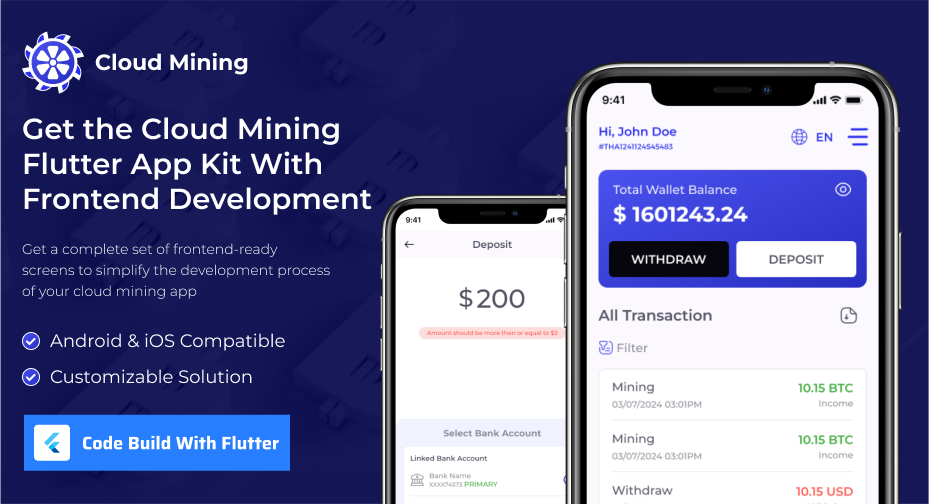
By following these well-structured steps, developers can avoid common pitfalls and focus on delivering a high-performance, secure, and user-friendly cryptocurrency mining app that stands out in the market.
Conclusion
Building a crypto mining app in 2025 is a smart move for developers who want to tap into the growing cryptocurrency market. By carefully defining your app model, planning useful features, selecting the right tech stack, and following a structured development process, you can create an efficient and secure solution.
Don’t forget to focus on strong security practices and performance optimization, as these are critical for user trust and app success. Whether you choose to build from scratch or start with a ready-made template, following this step-by-step approach will help you launch a powerful and competitive crypto mining app.
FAQs
- What is the difference between cloud mining and solo mining apps?
Cloud mining apps lease remote hardware resources to users, simplifying the process, while solo mining apps require local hardware, offering more control but needing technical expertise and expensive equipment.
- Can I use a ready-made crypto mining app template to save time and cost?
Yes, using a ready-made crypto mining app template (like a Flutter template) accelerates development, reduces costs, and provides a reliable foundation, allowing easier customization for your specific needs.
- How do I scale my crypto mining app to support thousands of users?
Use scalable cloud infrastructure (AWS/GCP/Azure), implement load balancing, optimize database queries, use microservices architecture, and design the backend to handle real-time performance efficiently.
- What are the legal and compliance challenges when developing a crypto mining app in 2025?
Key challenges include complying with regulations like GDPR, AML, and KYC, handling user data securely, and obtaining necessary licenses in jurisdictions where crypto mining is regulated or restricted.
- How can startups launch a crypto mining app without a huge initial investment?
Startups can reduce costs by choosing cloud mining models, using ready-made templates, focusing on MVP development, leveraging open-source solutions, and targeting niche markets to avoid excessive infrastructure costs.
- What’s the difference between Proof of Work and Proof of Stake in mining apps?
Proof of Work (PoW) requires solving complex mathematical problems with computing power, while Proof of Stake (PoS) selects validators based on their stake in the network, making PoS more energy-efficient.
- How do I monetize my crypto mining app?
Monetize the crypto mining app via mining contract fees, premium features, referral commissions, advertisements, in-app purchases, or offering advanced analytics and cloud-based resource management subscriptions.
 BTC - Bitcoin
BTC - Bitcoin
 USDTERC20 - USDT ERC20
USDTERC20 - USDT ERC20
 ETH - Ethereum
ETH - Ethereum
 BNB - Binance
BNB - Binance
 BCH - Bitcoin Cash
BCH - Bitcoin Cash
 DOGE - Dogecoin
DOGE - Dogecoin
 TRX - TRON
TRX - TRON
 USDTTRC20 - USD TRC20
USDTTRC20 - USD TRC20
 LTC - LiteCoin
LTC - LiteCoin

